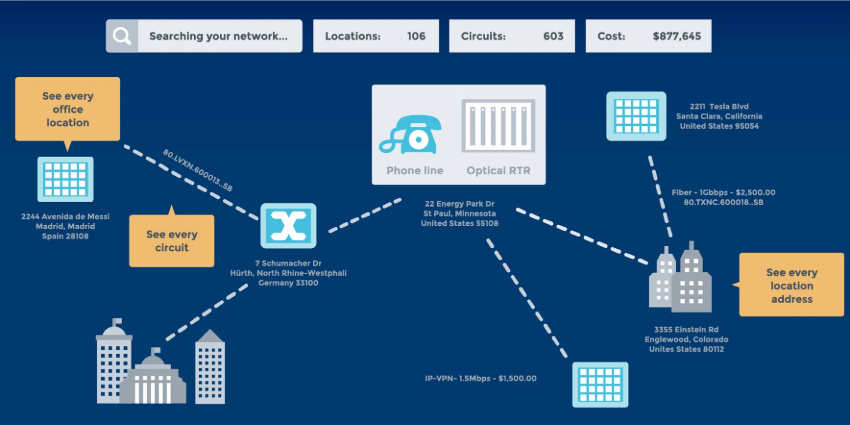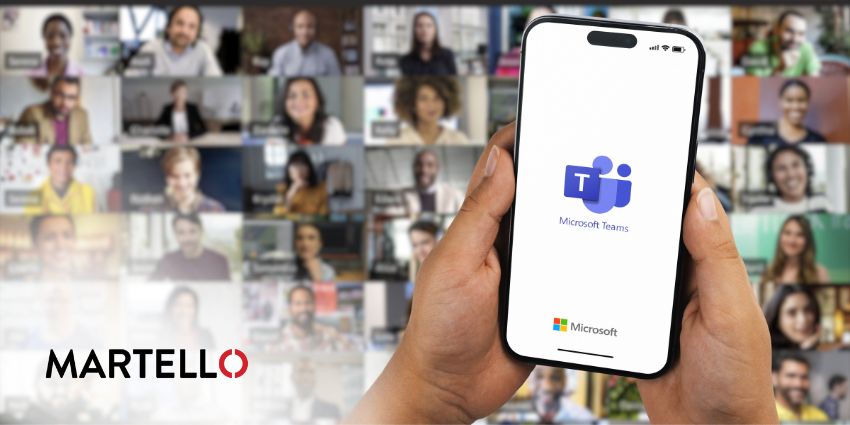The rise of cloud technology has given way to a more flexible method of obtaining new technology and services for today’s companies. SaaS solutions delivered on the cloud are some of the most cost-effective ways to access the latest tools and innovations. Businesses like PGi are leading the way with simple cloud-focused offerings that empower both people and companies to collaborate and communicate as efficiently as possible in the modern workforce.
To learn more about how PGi powers people with UCaaS technology, I caught up with CTO, Pat Harper. With responsibilities that involve managing the production and development of new technology innovations, Pat has excellent insight into how the UCaaS trend is affecting the industry. He told me that the challenge for businesses right now is keeping up with the changing demands of companies in a world where generational divides and changing opportunities are leading to transformative ways of communicating and collaborating in the enterprise.
“At PGi, we started with a solution for basic audio conferencing and evolved into offering a suite of unified communications solutions that make the way that enterprises interact much richer. We’re improving the way people connect and work together”
What Drives the Demand for UCaaS?

It’s easy to see that the demand UCaaS is growing. I was interested to learn why Pat and PGi thought that the industry has grown at such a rapid pace. Harper told me that the success of UCaaS had been driven by many different things. “From a technology perspective, you’ve got things like the growth of mobile communications and the accessibility of the cloud leading the way. It’s easier than ever to replace outdated forms of communication and collaboration with more immersive experiences.”
Pat also told me that there had been a significant change in the way the workforce operates today. “We’ve got millennials and new generations in the workforce that are used to things like texting, instant messaging, and video. They’re bringing new expectations into the business landscape that change the way that we communicate.”
Pat also noted that there are significant benefits to using UCaaS from a business management and economic perspective too. It’s much easier to adopt and roll out new technology through the cloud without going over budgetary restrictions. On the other hand, accessing new technology and delivering digital transformation with on-premise systems is often expensive and complicated.
How are User Expectations Evolving?
Just as customer expectations have changed in recent years, there has also been an evolution in user expectations. For some time now, there has been a significant gap between the kind of experiences offered on consumer-focused devices, and the experiences that people get in the business world. Pat told me that part of the reason for that is the consistent need for better privacy and security in the enterprise environment. Businesses have security standards that they need to adhere too, and privacy regulations are growing stricter and more demanding today.
However, despite these extra challenges that companies need to overcome, the gap between enterprise and consumer experiences is beginning to close. “Vendors are taking new steps to create consistency between the experiences you get at home and the ones that you see in the office. People want to be able to access things like HD audio and video wherever they are; users want more consistency in the apps they use at home and at work.”
According to Pat, a more consistent experience will be a positive thing for companies, as it will mean that employees don’t have to continually go through new training and guidance before they can begin using modern tools. If there’s a single standard for how applications and collaboration tools should work across all environments, new tools will become easier to adopt and use. This won’t mean ignoring things like GDPR and privacy regulations, but it will mean that companies need to consider how to balance security with usability.
Are Younger Generations Influencing Purchasing Decisions?
Pat had already acknowledged that younger generations were impacting the workforce earlier in our conversation. I was keen to find out whether he thought that these digital natives were also having an impact on the way that top-level purchasing decisions were made when it comes to new collaboration and communication tools.
According to Pat, the way that people buy UC solutions is changing. Younger generations prefer to download free versions of solutions and try them out before they proceed with a buying decision. That means that companies are needing to create more freemium versions of their products.
“The products that need to be built to accommodate these new environments are different to what we had a few years ago. There is more testing and experimentation involved in the buyer cycle than there used to be so that people can find the tools that work for them.”
Pat told me that there’s still a way to go before this new buying cycle is embraced in the VoIP world, but as phone systems move more progressively towards the cloud, there’s likely to be an evolution there too. People today expect more than just a buying cycle that means they get what they’re given. In a world where there are so many options to choose from, testing and experimentation are essential.
What Does the Future Look Like for Business Communications?
Finally, Pat acknowledged that the communication industry as a whole is changing at a rapid pace. As new things like natural language processing, AI, and IoT become more accessible, those functionalities will begin to change everything we do – including the collaborative process. PGi believes that AI is going to be built more deeply into the collaboration environment, to help people manage their work more efficiently.
“AI will be able to bring contextual information into conversations and help people to organise meetings at times that suit them, all while working seamlessly in the background of the tools that employees are comfortable with.”
“Transcription services and natural language processing will also make it easier for companies to host conversations between participants from different parts of the world easily”
Pat told me that he believes disruptive new technology has the potential to bring endless improvements in productivity, efficiency, and performance to the communication and collaboration environment. From content management to contextual communications, the more advanced AI engines and disruptive tech becomes, the more of an impact they’ll have on the business communication world as we know it.







